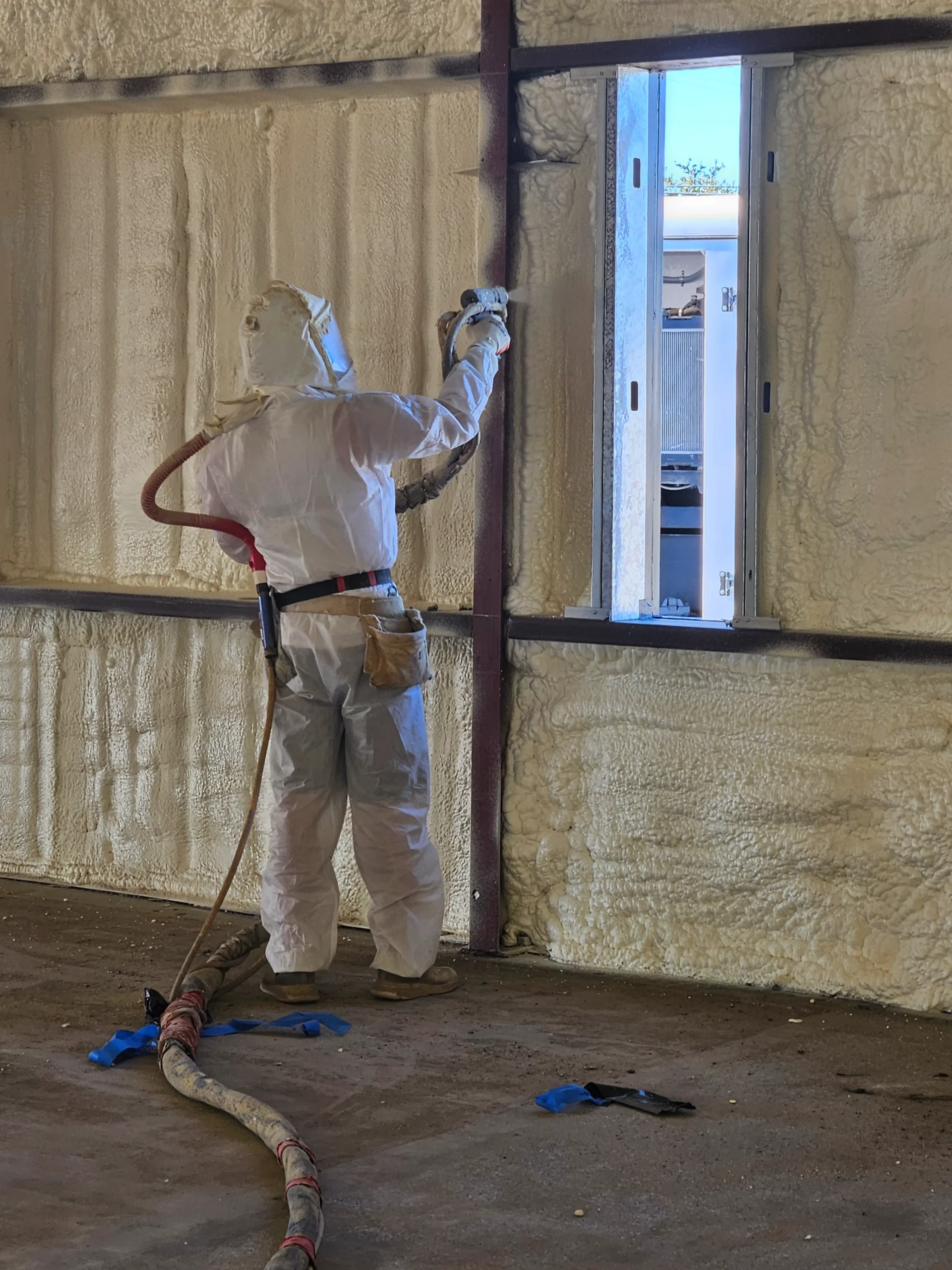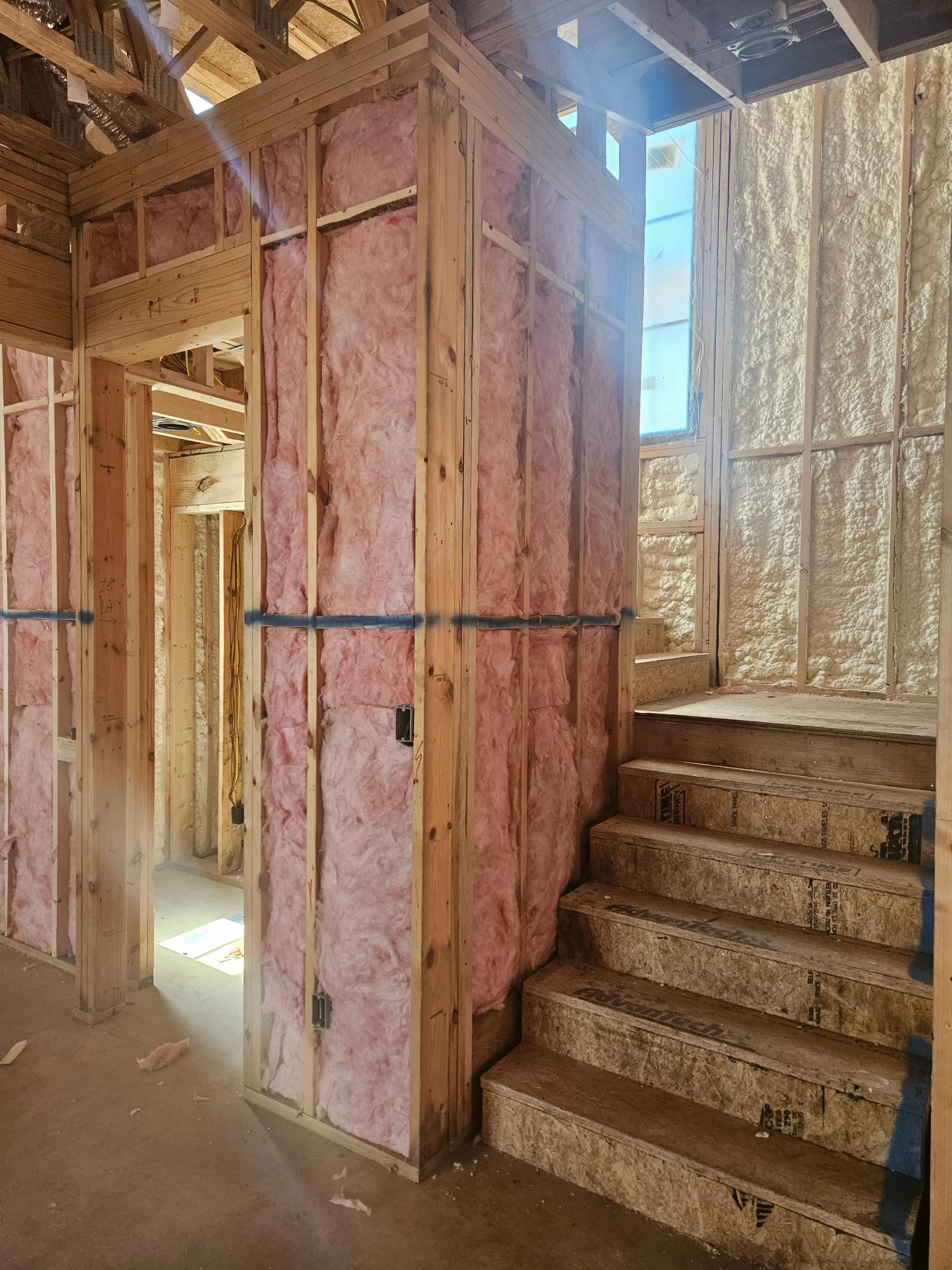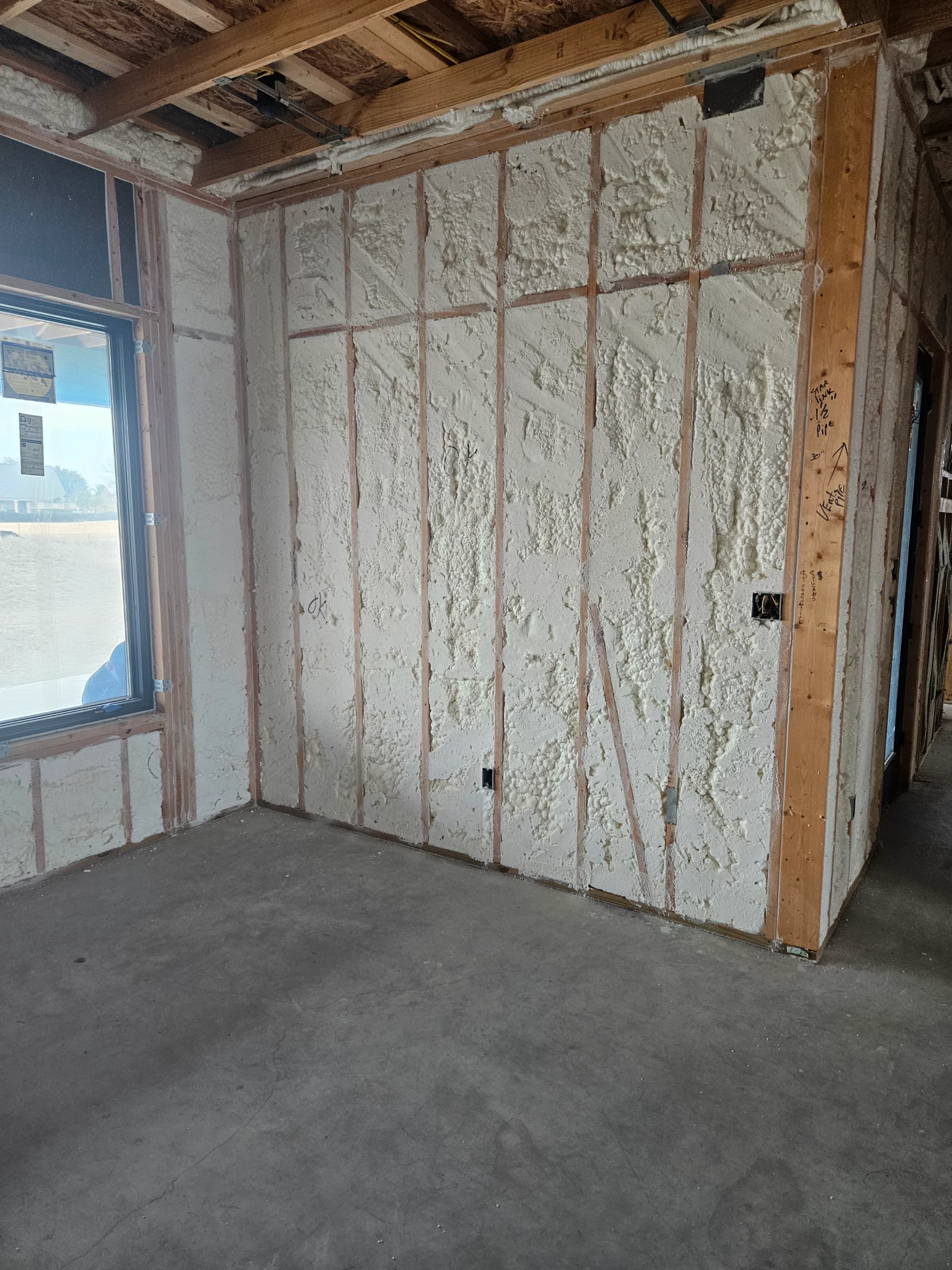

Foam insulation reduces utility costs in Belton by creating an effective thermal barrier that prevents conditioned air from escaping and outdoor air from infiltrating homes. Property owners typically achieve 15-40% reduction in heating and cooling expenses through proper foam insulation installation, with closed-cell foam delivering the highest energy savings due to its superior R-value and air sealing properties.
The key to maximizing utility cost reductions lies in addressing thermal bridging, air leakage, and moisture infiltration simultaneously. Foam insulation accomplishes this through its expanding properties that fill gaps and create continuous insulation coverage, unlike traditional insulation materials that leave thermal breaks at joints and connections.
Spray Foam Tech has documented energy savings across hundreds of Belton installations, with comprehensive thermal envelope improvements delivering the most significant utility cost reductions. This analysis examines proven strategies for cutting utility expenses through strategic foam insulation applications.
Foam insulation reduces energy consumption through multiple mechanisms that traditional insulation cannot match. The material expands to fill microscopic gaps and cracks that allow conditioned air to escape, creating an airtight seal that reduces HVAC system workload.
According to the Department of Energy, air sealing combined with proper insulation can reduce energy bills by up to 15% annually. In Belton’s climate zone, where temperatures fluctuate significantly between seasons, this translates to substantial cost savings for both heating and cooling expenses.
Belton’s hot, humid summers and mild winters create specific insulation challenges that foam insulation addresses effectively. The area experiences:
Closed-cell foam insulation performs exceptionally well in these conditions due to its moisture resistance and consistent thermal properties across temperature ranges.
| Insulation Type | R-Value per Inch | Air Sealing Capability | Moisture Resistance | Energy Savings Potential |
|---|---|---|---|---|
| Closed-Cell Foam | 6.0-7.0 | Excellent | Excellent | 25-40% |
| Open-Cell Foam | 3.5-4.0 | Very Good | Good | 15-30% |
| Fiberglass Batts | 2.2-2.7 | Poor | Poor | 5-15% |
| Cellulose | 3.2-3.8 | Fair | Fair | 10-20% |
| Performance Metric | Closed-Cell Foam | Open-Cell Foam | Traditional Insulation |
|---|---|---|---|
| Thermal Conductivity | 0.024 BTU/hr-ft-°F | 0.039 BTU/hr-ft-°F | 0.045+ BTU/hr-ft-°F |
| Air Permeability | <0.02 L/s-m² | 1.5-5.0 L/s-m² | 15-25 L/s-m² |
| Water Absorption | <2% | 15-20% | 30-50% |
| Structural Support | 25-35 PSI | 0.5-1.0 PSI | None |
Attic spaces represent the largest opportunity for utility cost reduction in most Belton homes. Heat rises naturally, making proper attic insulation critical for maintaining comfortable temperatures year-round.
Closed-cell foam applied to the roof deck creates a conditioned attic space, eliminating ductwork energy losses and reducing HVAC load by 20-35%. This approach works particularly well in Belton’s climate where traditional vented attics become extremely hot during summer months.
Bonus Tip: Sealing attic bypasses with foam before installing bulk insulation prevents stack effect air movement that can reduce insulation effectiveness by up to 40%.
Foundation areas often contribute significantly to energy loss through both thermal bridging and moisture-related issues. Foam insulation applied to foundation walls creates a thermal break while preventing moisture infiltration.
Research from Oak Ridge National Laboratory indicates that foundation insulation can reduce whole-house energy consumption by 10-20%, with greater savings in homes with ductwork or HVAC equipment located in these spaces.
Existing wall cavities can be insulated with injection foam without removing interior finishes. This retrofit approach fills voids in traditional insulation while sealing air leaks around electrical outlets, plumbing penetrations, and structural connections.
The building science principle of controlling air movement proves more impactful than adding bulk insulation alone. Foam’s ability to seal these pathways often delivers greater energy savings than increasing insulation thickness.
Initial foam insulation depending on application type and accessibility. Energy savings calculations must consider:
Most comprehensive foam insulation projects achieve payback periods of 3-7 years through utility savings alone, with additional benefits including improved comfort and increased property value.
Bonus Tip: Installing foam insulation during HVAC replacement maximizes energy savings by allowing proper system sizing based on reduced heating and cooling loads.
Several factors influence foam insulation performance and cost-effectiveness in Belton applications:

Spray Foam Tech provides comprehensive insulation solutions designed to maximize energy savings and utility cost reductions for Belton property owners.
Bonus Tip: Combining multiple application areas in a single project often reduces per-square-foot costs while maximizing whole-house energy performance improvements.
Foam insulation represents the most effective single improvement for reducing utility costs in Belton’s challenging climate. The combination of superior insulation value, air sealing capability, and moisture resistance delivers comprehensive energy performance improvements that traditional insulation cannot match.
Property owners who prioritize whole-house approaches rather than piecemeal improvements achieve the greatest utility cost reductions. Focus on identifying and sealing the largest energy loss areas first, then address secondary opportunities for maximum return on investment.
Professional assessment and installation ensure foam insulation delivers maximum utility cost reductions for your specific building and usage patterns. Spray Foam Tech provides comprehensive energy evaluations and customized insulation solutions designed to optimize long-term savings.
Contact Spray Foam Tech at (737) 777-9590 or oldworldtx@hotmail.com to schedule a detailed energy assessment and receive specific recommendations for reducing your Belton property’s utility costs through strategic foam insulation applications.
Energy savings begin immediately after installation, with most homeowners noticing reduced HVAC runtime within the first billing cycle. Maximum savings occur once the building envelope adjusts to new thermal conditions, typically within 2-3 months.
Foam insulation provides year-round benefits by controlling heat transfer in both directions. Summer cooling savings often exceed winter heating savings in Belton due to the challenging combination of high temperatures and humidity.
Injection foam and attic applications can be completed with minimal disruption to living spaces. Wall cavity retrofits require small access holes that are easily patched and painted.
Properly installed foam insulation requires no ongoing maintenance and maintains performance for the building’s lifetime. Visual inspections every few years ensure no damage from pests or building settlement has occurred.
Most Belton homeowners achieve 20-35% reduction in heating and cooling costs through comprehensive foam insulation upgrades. Actual savings depend on existing insulation levels, building construction, and occupancy patterns.
Foam insulation maintains thermal properties during temperature extremes better than traditional materials. The air sealing properties become particularly valuable during severe weather when building pressure differentials increase.
Installation can occur year-round, though scheduling during moderate weather periods allows better assessment of thermal performance improvements. Spring installations provide immediate summer cooling benefits.
Most residential applications complete within 1-2 days depending on project scope. The material cures quickly, allowing normal building use within 24 hours of application.
Many foam insulation projects qualify for utility rebates and federal tax credits when they meet specific performance criteria. Current incentives can offset 10-30% of installation costs.


